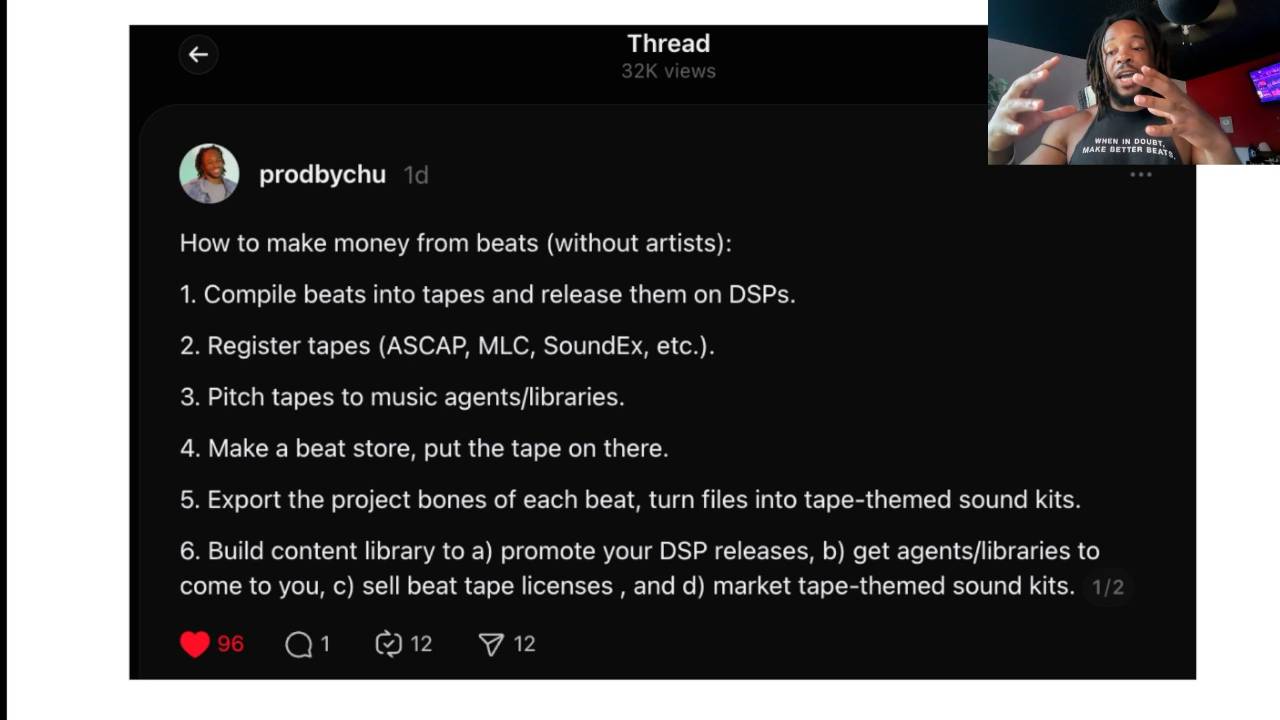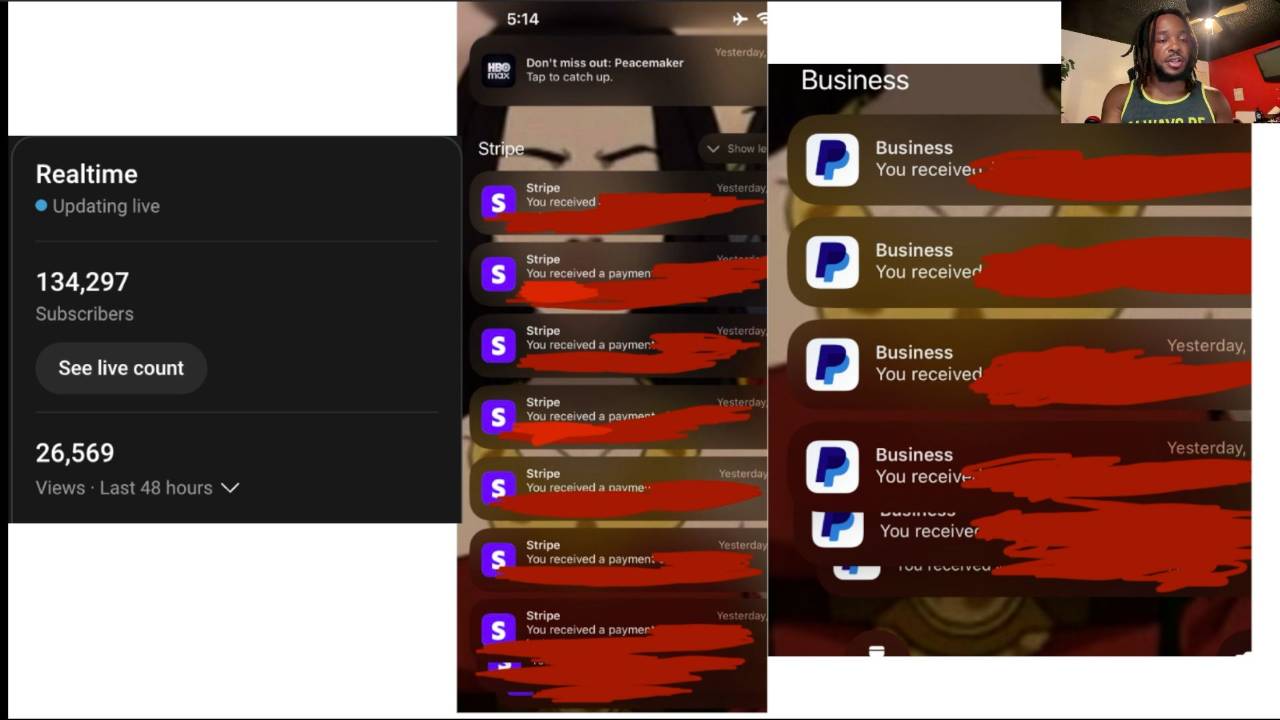
Keywords: Transient, transient shaping, compression, dynamics
This letter is based on week 3 of the 8-week Dynamics Module happening in DOPE right now - click here to join for the full lesson, guided tutorials, mentorship, and resources that will help you make music that earns you money.
My 3 favorite things about transient shaping.
I’m excited to talk to you about transient shaping today! It’s the type of thing I never get to nerd out about on my Channel (people don’t have the attention span for the secret gems 💎).
But…
Transient shaping is one of the most powerful tools in my tool belt because it;
- Allows me to use more sounds I like from instruments (because I can use transient shaping to shape parts of the patch I don’t like).
- Gives me more precise sound design control than compression (because, in many cases, a lot of my sound design comes down to transient shaping).
- Lets me have a more balanced mix (because I can control transients from track to track instead of using a compressor to squash them out in a bus or on the master).
By the end of this read, you'll understand this power (and be able to use it, if you so choose).
[Jam 5ive’s single “Quantum Shift” on our “Dark Trap Beats 2024” playlist 🔥]
As always, words are confusing.
There are a ton of ways to define “transients” in audio. I’ve asked tons of engineers and gotten just as many answers:
- “It’s a temporary oscillation that occurs in a circuit due to a sudden change in voltage.”
- “It’s the first initial peak or spike of a sound (waveform).”
- ”Something that starts with ‘attack’ is said to have a transient.”
- “Basically, if you can understand that transients don’t fade, you’ll get it perfectly”.
Similar to the compression letter, these are all good definitions. But none explain it in a way that helps you use it.
So here’s the non-wizard definition of a transient → that initial hit in a sound.
- The pluck part of the guitar note.
- The thump of the snare
- The bang of the kick drum
- The stabbing onset oscillation of a synth lead
- The pedal hit on a piano note.

(Examples of transients in piano chords).
Note: Transients are atonal in nature - they happen before you hear the actual melodic content of the note. It’s the ‘attack’ phase of the sound.
So a transient shaper is just something that allows you to manipulate the transients of an audio signal.
Technically, anything that shapes dynamics can be a ‘transient shaper.’
- Compressors.
- Limiters.
- Dynamic equalizers.
(just to name a few).
BUT…
Transients are such a big deal in music that at some point we made a new type of ‘compressor’ just to control them more.
[Jam IFEELVOID’s single “Faces” on our “Dark Trap Beats 2024” playlist 🔥]
Thus, our ‘Dynamic Processing Tool Belt’ grows 🤓.
Once you get to transient shaping you know your bag is getting deep.
This simple tool is powerful for shaping sound to your desire.
The possibilities are endless once you understand how to use it (and PRACTICE!!)
And as a bonus, I wanna share a few transient shaping tricks I use in my beats.
3 ways I use Transient Shaping everyday in my beats.
There are a bunch of other ways that I'll share in DOPE - these are just some of my go-tos!
1 - Smoothing out hard synth leads.
Synths are my favorite instrument (which is funny because I’m fluent in at least 3 acoustic instruments).
The better the synth you’re using, the more powerful and raw the sounds are.
This is dope because the sounds are so unique and clean.
But it can be a bitch to mix tbh.
Good synth leads especially tend to have this ‘bite’ to them in the attack phase. I like that, but some times the transient overpowers my mix.
I used to over-compress or try dynamic EQ, but now I reach for the transient shaper first almost every time.
For example, I’m making a melody right now and the lead melody is a dope patch from Re-Pro 1 - Rubberphone.

It’s not the harshest, but the attack phase just has too much bite when I play it together with the chords. Here’s how the transient looks (we’re using FL Studio’s Transient Processor to view and shape this example).

To reduce that bite just a little, all I need to do is reduce the attack and increase the release (sustain) on the Transient Processor:

And because the chords were played by a Re-Pro 5 synth patch I added polyphony to,


I added a Transient Processor with similar settings on that too, just to smooth out the relationship between the 2 audio signals (based partly on my scientific understanding and partly on my creative taste):

2 - Getting “that one snare” to fit the mix.
Snares are the only place I use Transient shaping more than synths.
And for good reason - that snare gotta hit because it’s part of the big three.
We talked about that extensively in the recent mixing full guide, as well as episode 5 of the podcast.
My favorite snares are loud and powerful - which I like.
But, they are so strong that they can overshadow other important elements of the mix - which I don’t like.
Transient shaping is the best solution I've found for this, and here’s the exact workflow 👇
- Pick the snare you want but that is too overpowering.
- Add a transient shaper to the snare track.
- Reduce the attack on the snare - this will decrease the perception of its 'initial punch.'
- Tweak the attack until the snare no longer offends (be tasteful - too much sounds bad).
- Increase the sustain/release just slightly - use creative taste.
- Adjust the gain of the snare to your desire.
I laid down some drums on that melody from above. I love the power of the ‘cooked’ snare from Centerfold , but it’s really taking over the mix.
Using the workflow above with Neutron’s Transient Shaper, here’s the tweak I made to the snare:

3 - Making the Hi-Hats more “Jiggy.”
Sorry, it’s the only way I can describe how this work flow makes me feel!
In a balanced mix, the hats tend to be less present. That just makes sense too, hi-hats shouldn’t come even remotely close to sounding over powering.
At least in trap production, they are more of a pace keeping rhythmic flourish than anything else. But they still drive the bounce, so you want them to be heard.
Again, I reach for transient shaping because it allows me to make the attack of the hi-hat just a bit clearer without increasing it’s gain - This adds clarity to my drum bus and loudness to my overall mix.
Here’s how I set the Transient Processor for this effect:

Here’s the thing though, homie.
We got you 😎.
You’re one of us now.
You’re a sound wizard in training 🧙♂️.
So peep the previous letters on dynamics:
- Week 1 - Compression.
- Week 2 - Clipping.
Get up to speed with transient shaping too (week 3), because we’re moving - next week is limiting.

Get Sound Kits 👇





